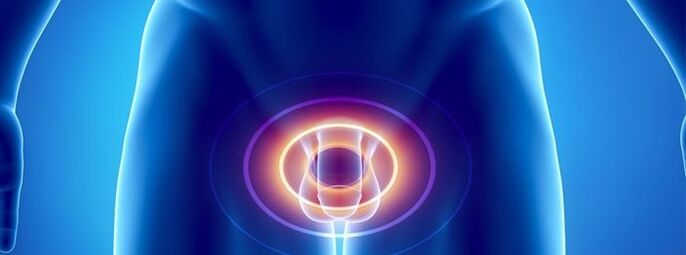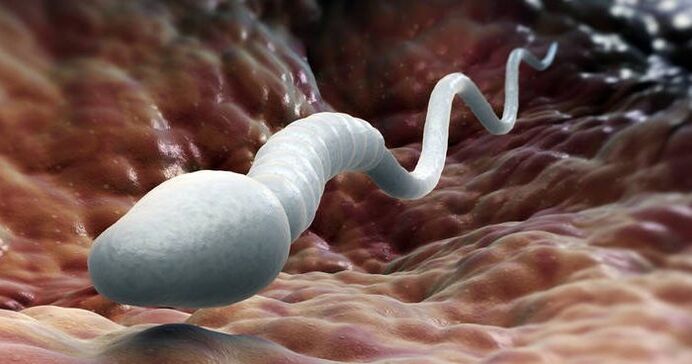
In medical articles on urology and andrology, the term "pre-ejaculate" can often be found. What does it mean? And is it connected with diseases of the male genital area?
Pre-ejaculate
When a man comes into a state of sexual arousal, a clear liquid begins to stand out from the urethra. It is she who is called pre-ejaculate.
The term itself indicates that the process precedes ejaculation - ejaculation. The release of such a fluid is an absolutely normal and physiological process. Moreover, if this does not happen, it is advisable to contact a urologist or andrologist to exclude the pathology of the reproductive system.
The second name for pre-ejaculate is pre-seminal fluid, or pre-seed. It is colorless, viscous in consistency, and has a specific odor. The pre-ejaculate contains mucus and various enzymes, the reaction of this liquid is alkaline.
The pre-sperm can be released not only during intercourse, but also during masturbation or petting. For her appearance, only the sexual arousal of a man is important.
Preseed formation
Preseed formation is a rather complex process. In the body of a man there are special glands located in the muscles of the perineum, at the base of the penis. They are called bulbourethral, or Cooper.
These formations in men were discovered by an anatomist named Cooper in the seventeenth century, but at that time their purpose remained unknown. Subsequently, thanks to this doctor, they received their second name.
In addition, there are Littre glands, where a certain amount of pre-ejaculate is also formed. They are located in the urethra - from the neck of the bladder to the external opening of the urethra. The task of the Littre glands is to excrete an alkaline mucous fluid that increases the volume of the precum. Normally, it ranges from two to three drops to five ml, sometimes more.
Sometimes men turn to a specialist with complaints of abundant pre-semen discharge at the slightest sexual arousal. It can really become noticeable to others and cause significant discomfort to the patient. However, this situation is treatable. The andrologist prescribes therapy after an appropriate examination.
Prescription of pre-ejaculate

What is pre-seminal fluid used for? Most people believe that its main purpose is to moisturize and lubricate the penis. Indeed, the release of pre-ejaculate facilitates the entry of the penis into the genital tract of a woman, especially if she, for some reason, does not have her own lubricant.
However, in addition to this, the pre-seed also performs other, no less important functions. These include:
- Neutralization of the acidic environment after the passage of urine through the urethra.
- Facilitating the movement of spermatozoa along the canal and its hydration.
- Removal of the contents of the urethra (urine residues, semen).
Sperm cells die quickly in an acidic environment. Thus, it is thanks to the alkaline pre-ejaculate that they can enter the female genital tract intact and fertilize the egg.
In addition, it is believed that it is the pre-seed that protects the male reproductive cells in the acidic environment of the vagina.
However, you can often hear from experts that it is from this small amount of pre-seed that you can get pregnant. And even regular petting can become unsafe for a couple not planning to have a baby.
Pre-sperm and pregnancy
The statement that pre-seminal fluid contains a certain amount of sperm is quite common both among the population and among doctors. It is with this that the ineffectiveness of interrupted intercourse (PAP) is associated as a means of contraception.
Most articles on the Internet and even popular science books on sexology claim that sperm are very often present in the precum and can cause an unplanned pregnancy. Is it really? To get an answer to this question, you need to understand how sperm and pre-seminal fluid are related. Can sperm get into the precum?
Sperm

The sperm of a man consists of two fractions. These are directly sperm and seminal fluid.
Sperm cells, along with the male sex hormone testosterone, are produced in the testes.
With semen, the situation is somewhat more complicated. It is a combination of seminal vesicles and prostate secretions.
Sperm with seminal fluid are secreted from the penis during ejaculation, and it is they who make pregnancy possible.
However, the testicles and Cooper's glands are not connected in any way. And if the secret of the latter can get into the seminal fluid, then the release of spermatozoa during the release of pre-ejaculate does not normally happen.
What is this medical myth related to? Why do most sources claim that the pre-seed can also fertilize a woman? Probably, the origins of this delusion lie in the ineffectiveness of interrupted intercourse.
Medical delusion
Frequent cases of pregnancy after interrupted intercourse prompted doctors to think about the sperm content in the pre-ejaculate. Research confirming this fact has never been carried out, but this opinion has become firmly established over time and is reflected in the popular scientific and medical literature. Moreover, even teachers at lectures often convey this information to students.
Nevertheless, over time, such an unfounded statement raised doubts among many specialized specialists, and more and more andrologists were inclined to consider it a myth.
In 2003, a study was conducted in Israel, the main purpose of which was to confirm or refute this widespread belief.
Study

The Israeli study involved twelve volunteers. The group included both young boys and middle-aged and elderly men. In addition, along with healthy people, patients with various andrological problems also took part.
All samples with pre-seminal fluid were carefully examined under a microscope. None of them showed the slightest trace of sperm. Thus, the study proved that the opinion about the content of sperm in the precum is another medical myth.
Despite the small size of the group, this experience was one of a kind and more research has not been done on this issue.
However, patients often ask doctors why pregnancy is possible after interrupted intercourse? And if the pre-sperm does not contain sperm, where do they get into the female genital tract?
Interrupted intercourse
Coitus interruptus involves the withdrawal of the penis from the woman's vagina before ejaculation begins. The only thing that is released from the penis during sex before ejaculation is the pre-seminal fluid. Since it does not contain sperm, it is impossible to become pregnant with a technically correct PPA. And yet this happens with enviable regularity.
Doctors identify two main reasons for the ineffectiveness of this method of contraception:
- Too late removal of the penis from the vagina. This happens especially often with early ejaculation.
- The presence of sperm in the urethra after a previous ejaculation. They are carried out with precum and enter the female genital tract.
- Excessive arousal of a man, which does not allow him to control ejaculation.
The most common cause of an unplanned pregnancy is untimely removal of the penis. In some situations, a man does not even suspect that ejaculation begins in the vagina.
Pre-ejaculate makes it possible for sperm to live in the urethra and vagina of a woman, but it itself does not contain male germ cells. However, you should not use interrupted intercourse to prevent pregnancy, since the effectiveness of this method is low.

























































